Zihuatanejo, Mexico, seems hidden, but it doesn’t feel out of the way. Less than an hour from Mexico City by plane, the Thompson Zihuatanejo hugs the beach as if in a gentle, unassuming embrace. While its neighboring town of Ixtapa was developed with a clear goal of fostering tourism, in Zihua (an abbreviated name locals use for the city), you’re welcomed by fishing boats instead of a fleet of cruise ships. Embedded along its stone-lined roads and beneath the fans of bougainvillea lies the distinct sense that this is just how it’s always been.
So it shouldn’t be a surprise that the food here doesn’t betray its locale. Produce is allowed to tell a story and Miguel Baltazar, executive chef of the Thompson’s two on-site restaurants—the casual eatery Hao and the dinner-only Ceniza—is happy to serve as narrator. For him, a good day begins at Zihuatanejo’s main market where, while browsing stalls of guava and jicama, he speaks of mole and pepper as one would local lore.
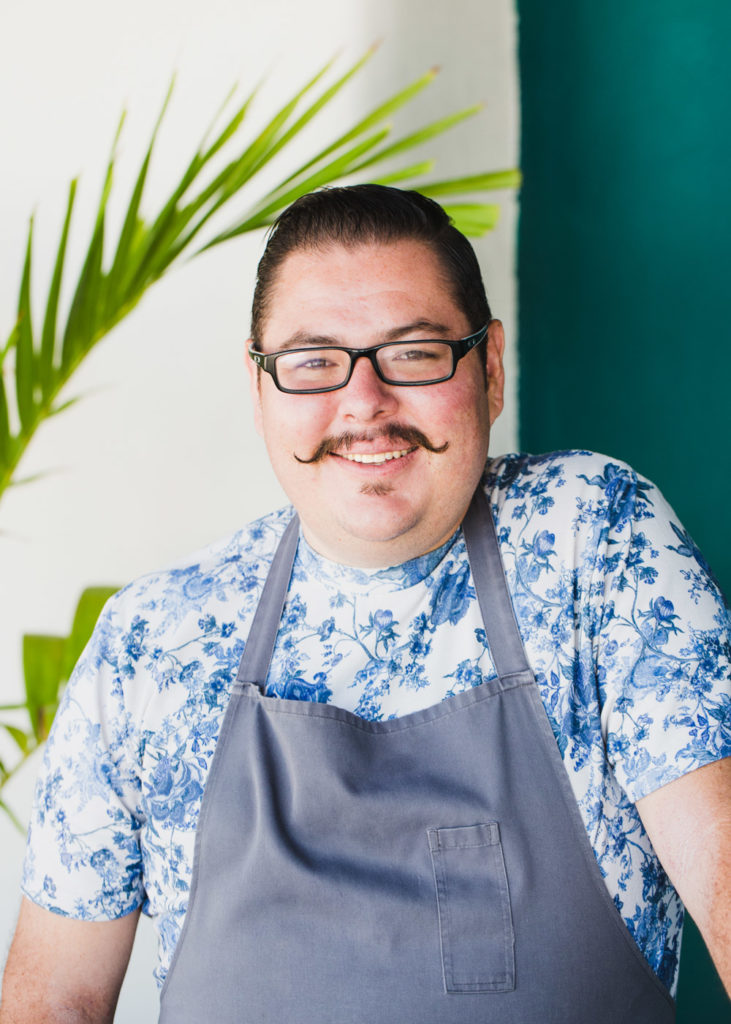
“The poblano pepper really tells the history of Mexico,” he says. “When the Spanish came, they brought the green bell pepper. We already had the jalapeno, and this amazing [hybrid poblano] pepper turned out. I love it. It’s not too spicy—very flavorful.”
He’s on a quest from vendor to vendor to determine what will make it to the plate. The premise of his cooking is simple: focus on the food. The farm-to-table philosophy might feel like the zeitgeist in the States but in Mexico, as Baltazar says, this is the essence of the country’s cuisine.
“My grandmother, who is eighty-something, still goes to the same farmers market she’s been going to her entire life. She buys a couple of tomatoes, a couple of chilis, maybe some fish or some beef cheeks—whatever she is going to cook for that particular day,” Baltazar explains, highlighting the local approach to food that’s central in Mexican cuisine. “This is what we want to translate to our guests.”
Granted, most come to Mexico with tacos and margaritas on the brain—and for good reason. At a beachfront cooking class held at the hotel, Baltazar teaches guests how to turn a handful of avocado, onion, serrano and lime into arguably the best guacamole that exists. There’s no denying that when you’re at the source, even the classics satisfy in a way they wouldn’t elsewhere. But if it’s up to Baltazar, he wants to push the palate, reaching beyond plantain chips and salsa, for example, to bone marrow roasted in a fire cage.

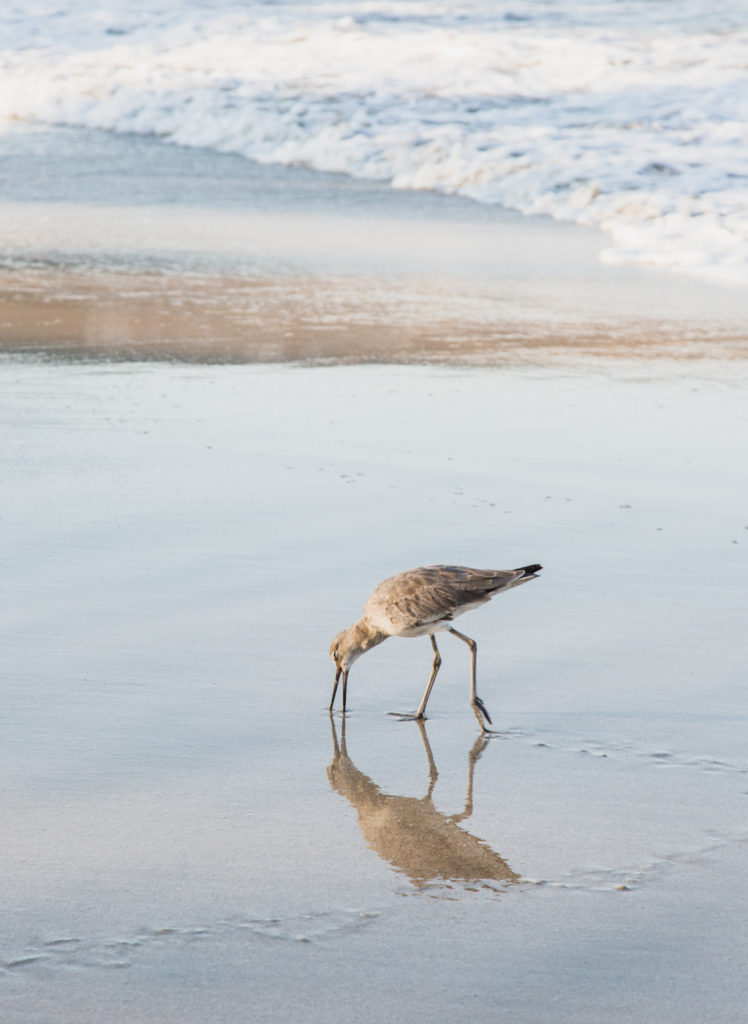
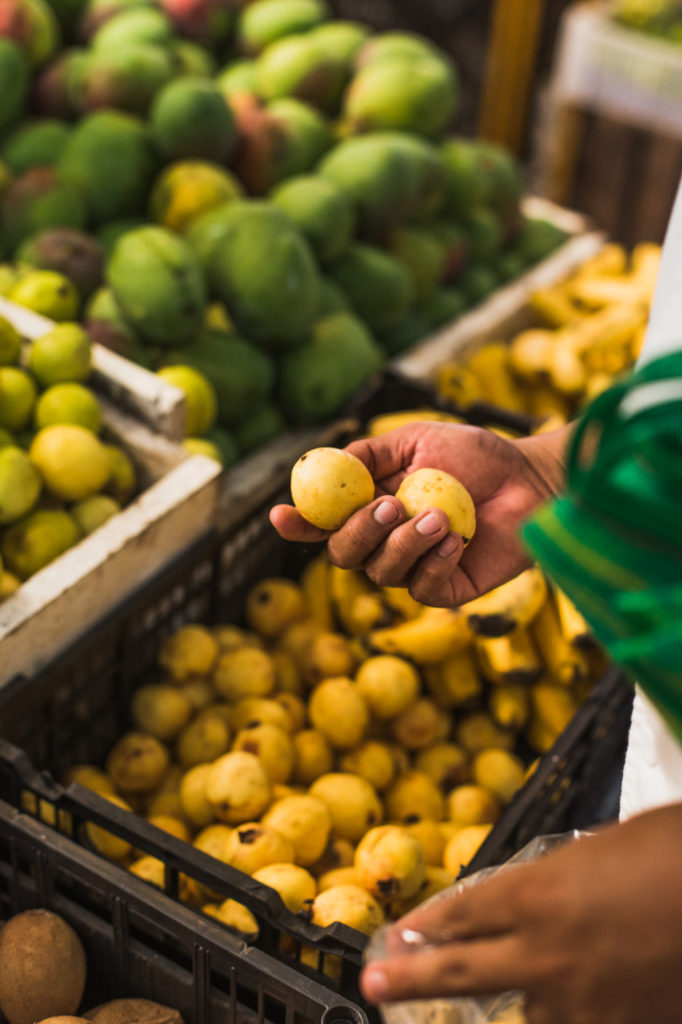


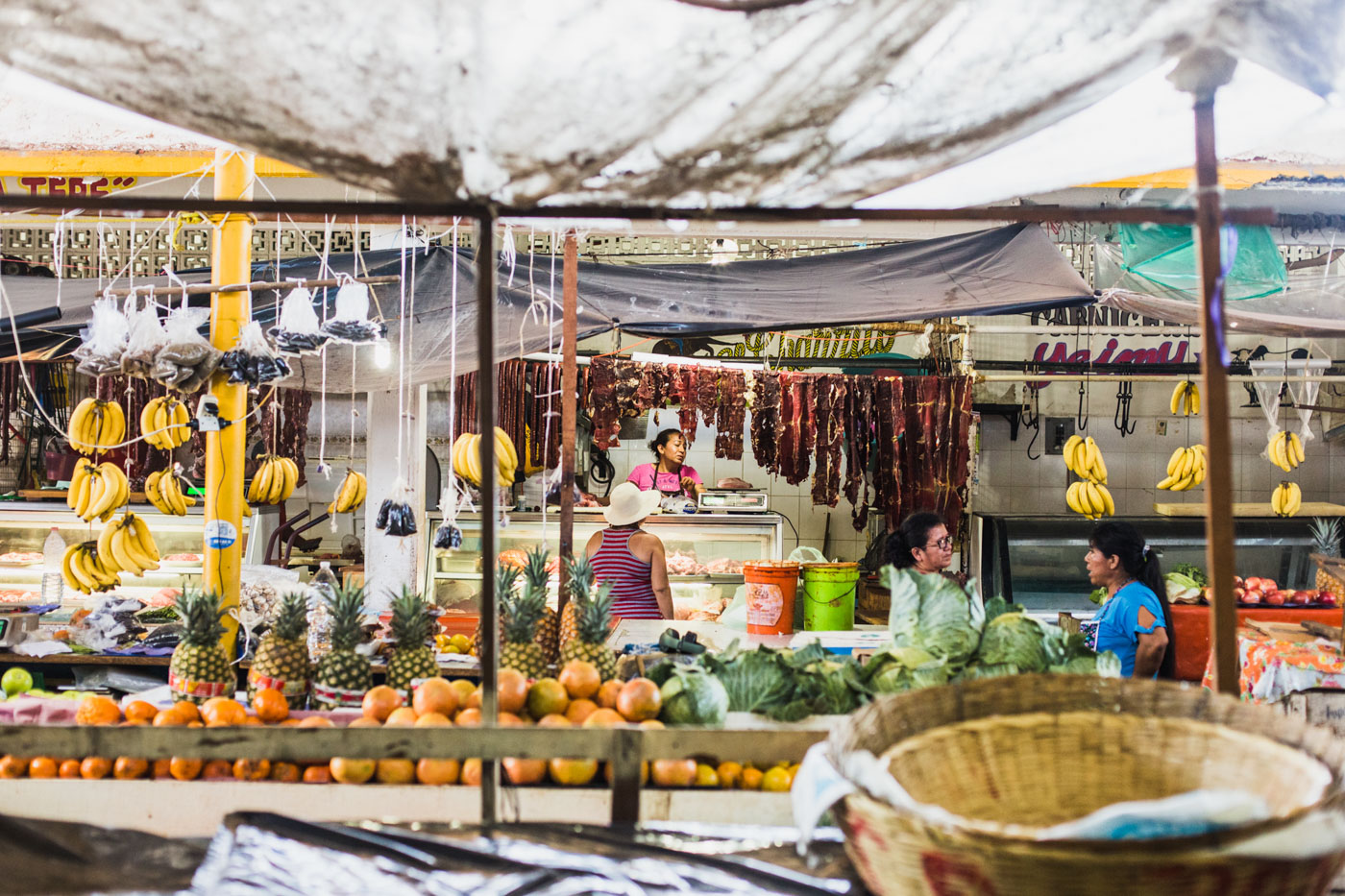
Ceniza—meaning “ash” in Spanish—Thompson’s outdoor dining centerpiece is the perfect spot to cook over an open fire. After finding the metal frame of an old Christmas tree decoration behind the property, Baltazar repurposed the material into a multi-tiered roasting station. It’s barbeque in an elegant, yet raw state. Fennel bulbs, corn husks, broccoli and celery dangle over hot coals. There’s a garland of octopus and alternating racks of steak, short rib, pork belly, coconut and butternut squash. Below that, tomatoes blister in a cast iron pan. Even pineapple and lobster find a place within the flames.
“I come from a fine dining background,” says Baltazar, who trained at the Culinary Institute of Mexico and the Lycée Hoteliere Paul Augier in Nice, France. He worked for some of the top luxury hospitality companies before arriving at the Thompson, including the Auberge Resorts Collection and AMAN Resorts in Turks and Caicos, the Baja California Peninsula, and the Mexican Pacific. He says he began to prefer the product over the actual art of plating, growing more comfortable showcasing food honestly how it is.
“Cooking with fire,” he comments, “ignites in us a very primitive instinct. That’s what we want to share.”
While the focus on technique is very traditional at Ceniza, the inventive interpretation proves that fine dining isn’t far from Baltazar’s mind. One of his signature hot appetizers features grilled young corn roasted in the fire cage with husk on to preserve the flavor. The fibers covering the cob are later singed to make a cacao and corn ash mole with aged cotija, the only Mexican cheese that has an appellation of origin. The result is a stunning juxtaposition of black, yellow and white.

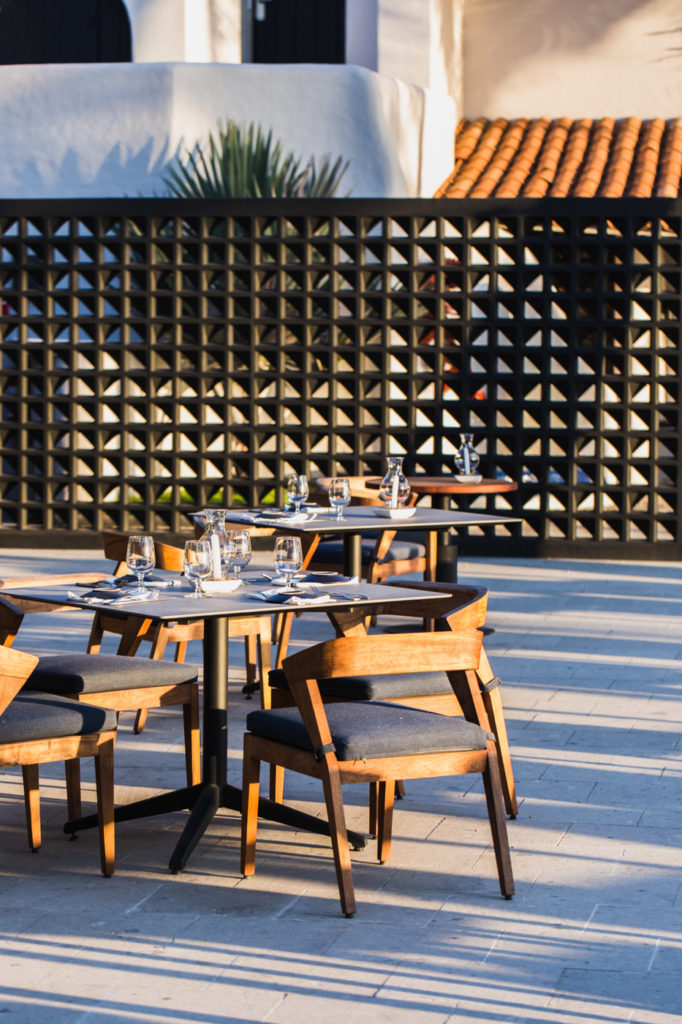
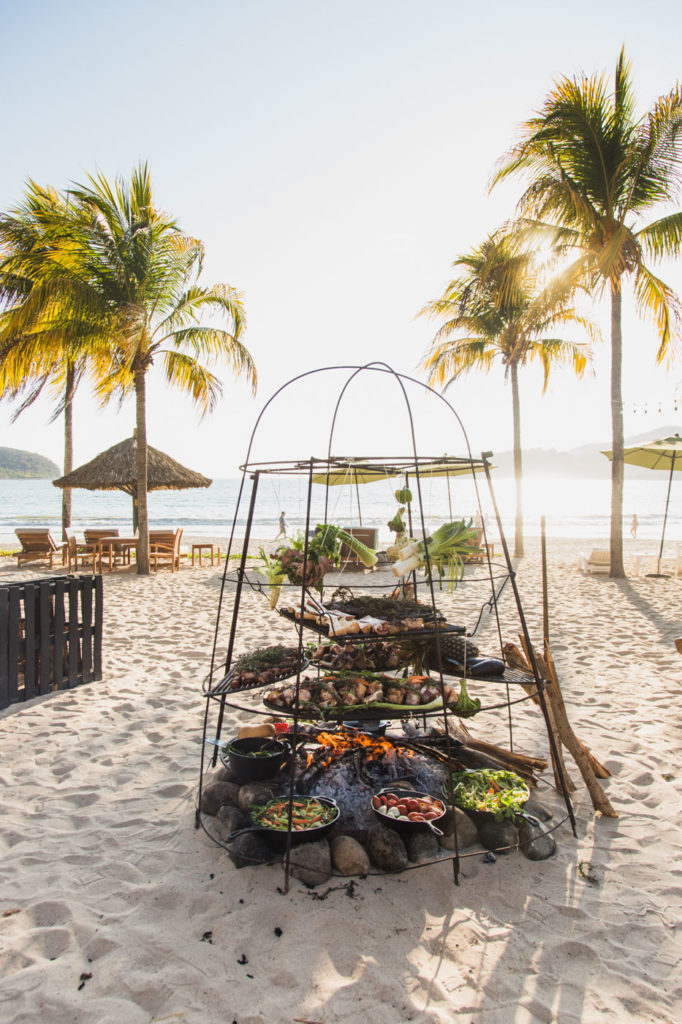
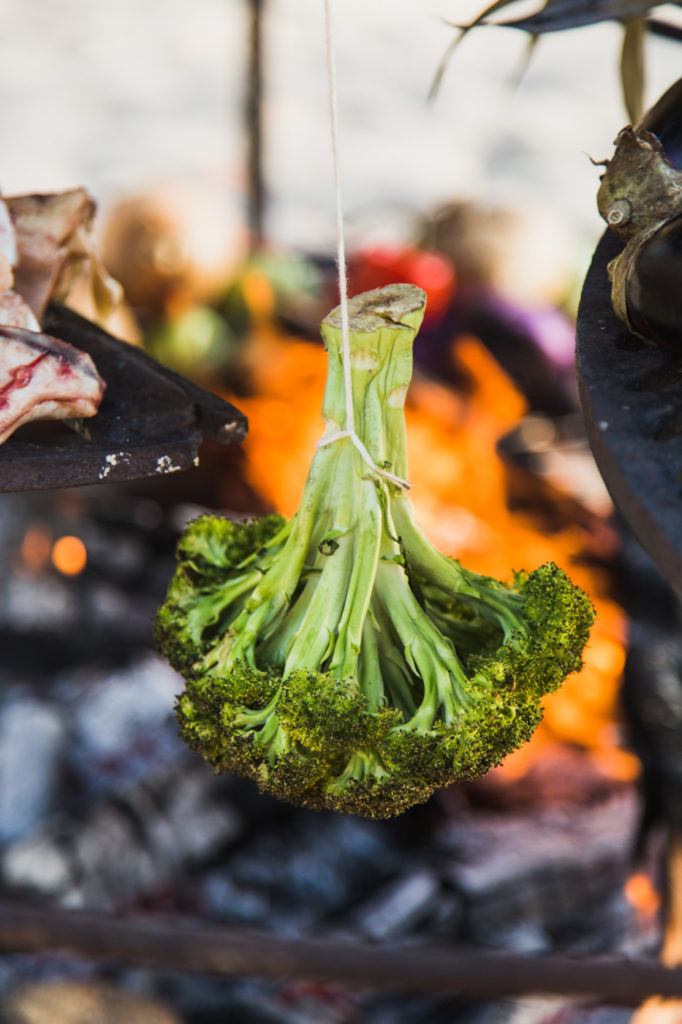
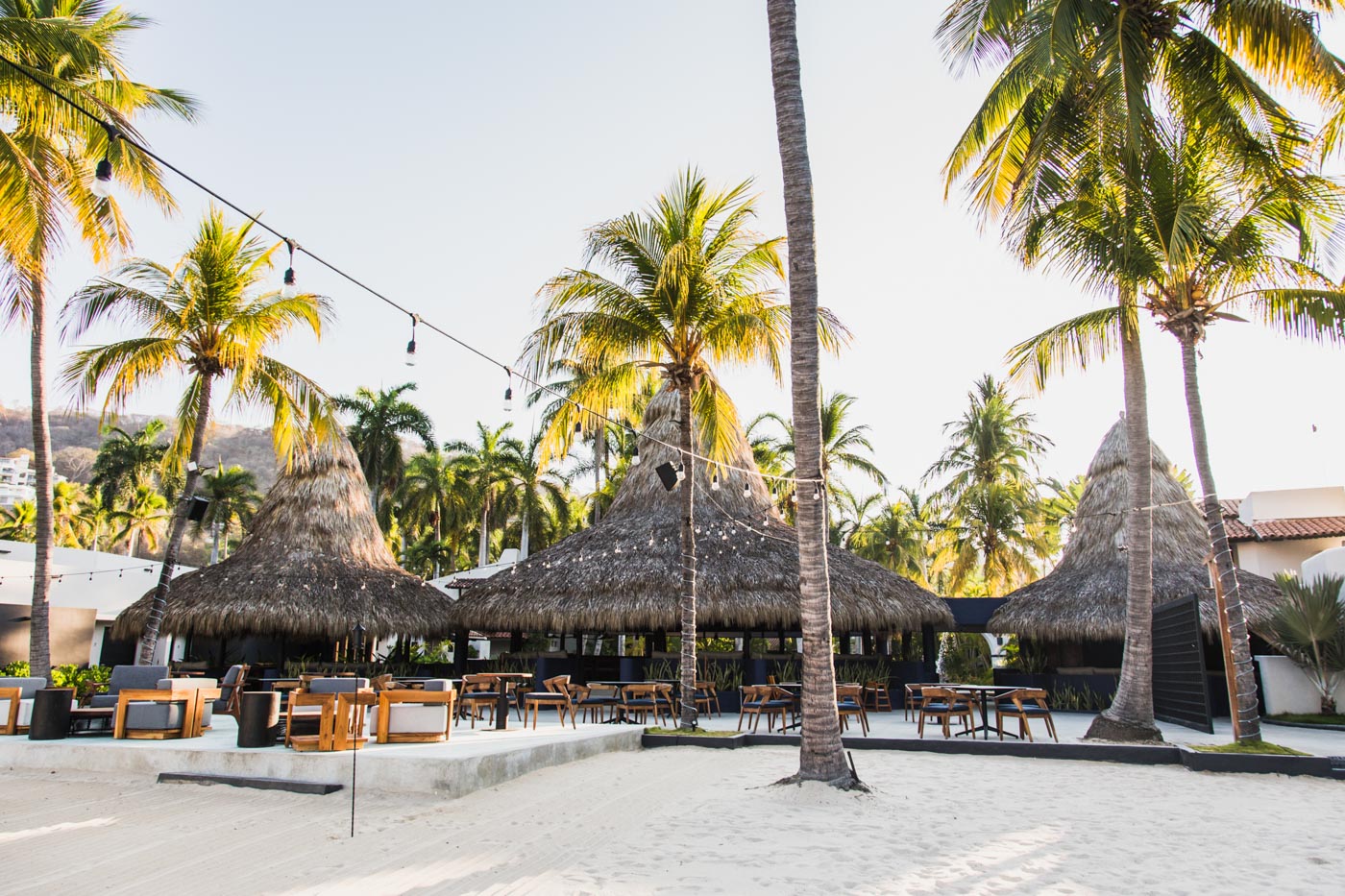
The same could be said for his chocolata clam served with pineapple hollandaise, guajillo chili and chive, or the passionfruit aguachile with local scallop and abalone. Bites are carefully crafted to open guests’ eyes to exactly where they are—inside of a vibrant, dynamic country.
“When we were in the process of creating the concept for Ceniza, we didn’t want to be too encapsulated in just the Mexican concept,” Baltazar says. “People come to Mexico, particularly to a destination like Zihuatanejo, and they do want that local experience—the Mexican experience. You can find it in Ceniza, but with a very different approach.”
Items in the fire cage are rotated at certain heights depending on whether they should be slow roasted or over direct fire, and whether more or less smoke is desired. “The bone marrow we want as high as possible,” details Baltazar, referencing his show-stopping dish served with ash-cured beef carpaccio, shallot, soy and wasabi. “The only thing we want is for the actual marrow to soften up. Then, we put it on high heat in our charcoal oven just to caramelize and roast.”
Fittingly, sustainability is also on the menu at Ceniza. Baltazar chooses to source only from local firewood suppliers, saying it wouldn’t make sense to bring in applewood, for instance, if they already have mesquite on hand. It lends well to a sweet, long-lasting smoke. Dried coconut shells from the many palm trees that cover the property are also burned inside of a smoker.
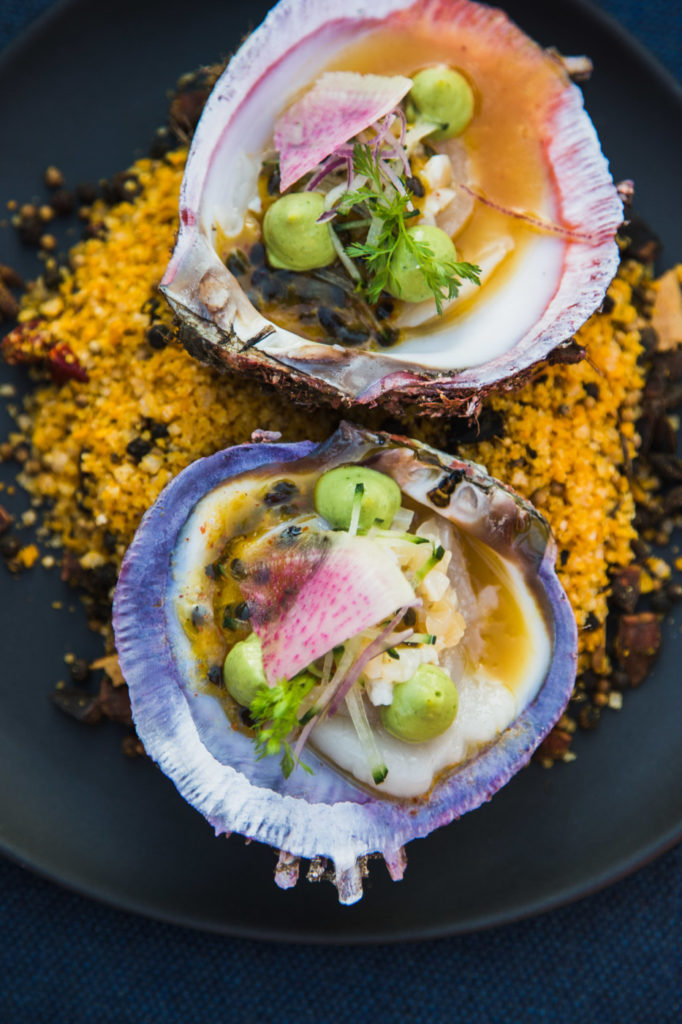
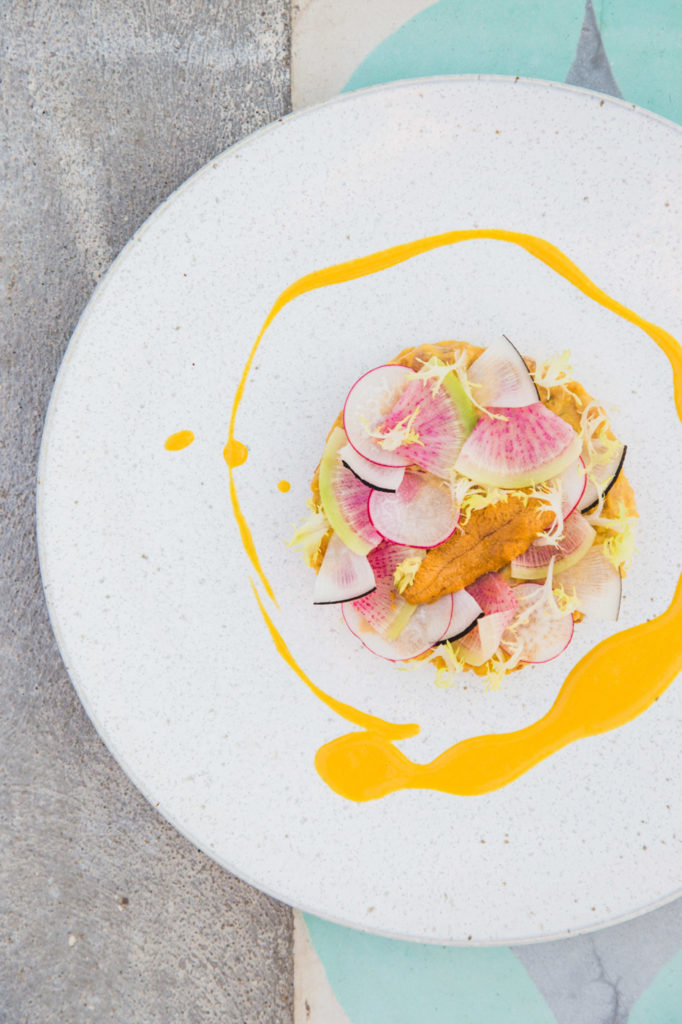

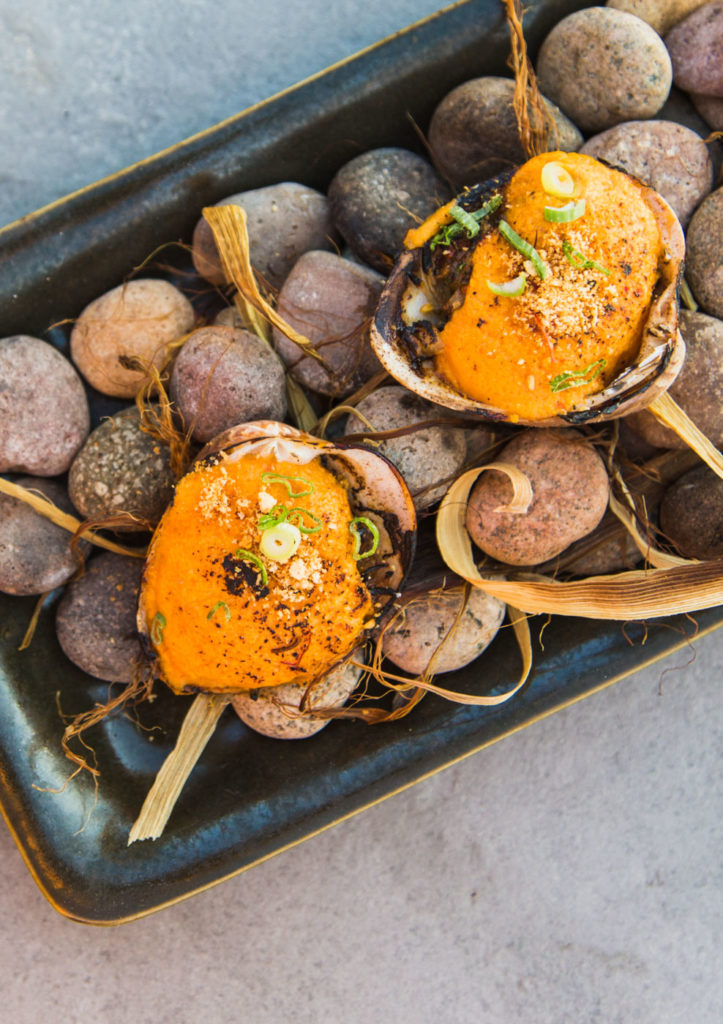
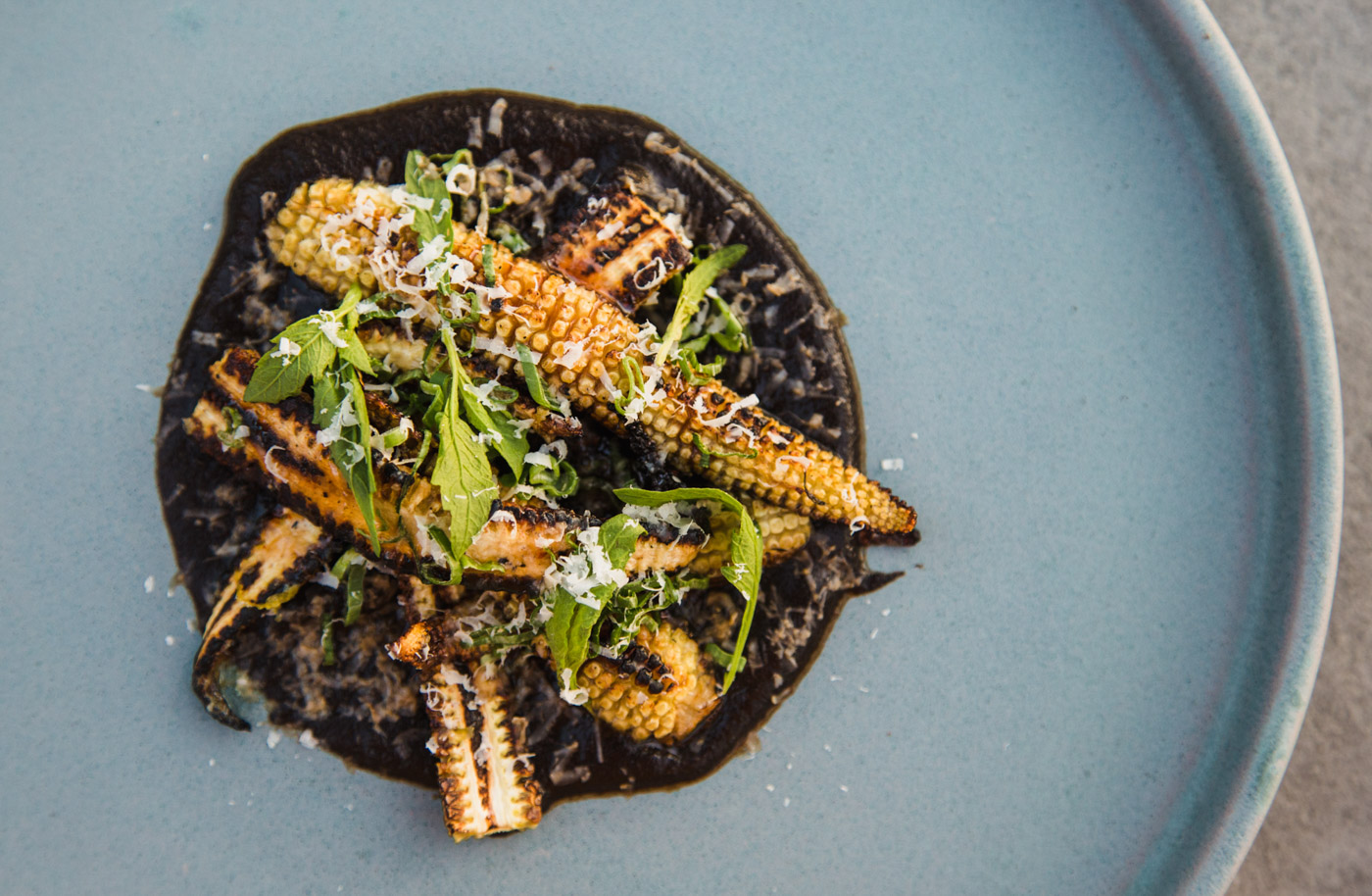
Seemingly anything can be put into—and then removed from—the fire. A little of this, a little of that; it’s like a visual representation of mole. While pointing out spices at the market, Baltazar explains the availability of ginger, cinnamon and tamarind reflect the fact that as a former Spanish colony, Zihua received its goods from Europe through Asia. Mole reminds him of curry paste: a base of spices and fresh chilies that will eventually be diluted with a broth. Proof that food is the ultimate truth: We’re more alike than we think.
“We have taken the Mexican Pacific as our greatest inspiration product-wise,” Baltazar continues. “Anything from Chiapas, Oaxaca, Guerrero, Michoacán, Nayarit, Sinaloa, and Baja, California. The Pacific shares so much in common, gastronomically.”
It’s a delicious collaboration. Whether it’s Ceniza’s cocoa tamale dessert, made from scratch in-house and filled with a black Oaxacan mole ganache, or the creamy Morelos rice—one of the few Mexican ingredients that, like cotija, also has an appellation of origin produced in the neighboring state—combined with Querétaro artisan goat cheese and charred peaches, no dish here feels like something you’ve had before, even if the ingredients read familiar.
“With most things in life, when you take time and patience, the result is amazing,” says Baltazar, standing over the coals that he, along with his crew, have been stoking since 9 a.m. He’ll likely continue as late as midnight.
As the sun sets west over the ocean, the hills surrounding Zihuatanejo grow dark and start to twinkle with lights. The white noise of the waves balances the chirpy flute coming from Ceniza’s speakers. The sand feels cold under bare feet, but around the fire—long humanity’s hub for creativity and transformation—everything feels warm.
Editor’s Note: This story was made possible through the collaboration of Thompson Zihuatanejo who accommodated lodging and travel for our team.





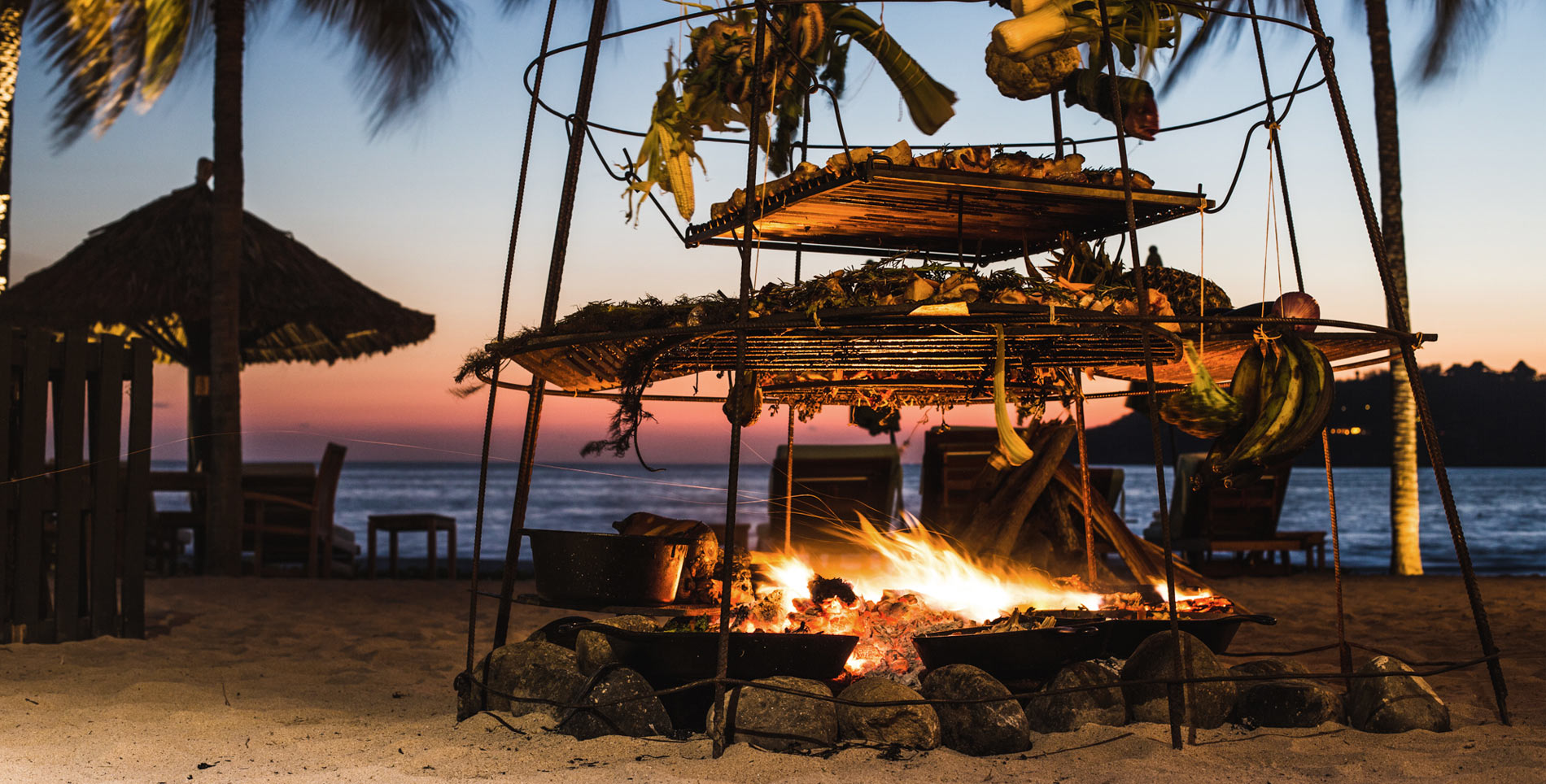

Our comments section is for members only.
Join today to gain exclusive access.